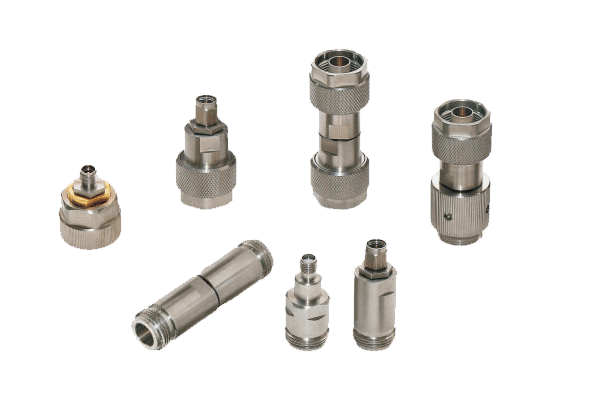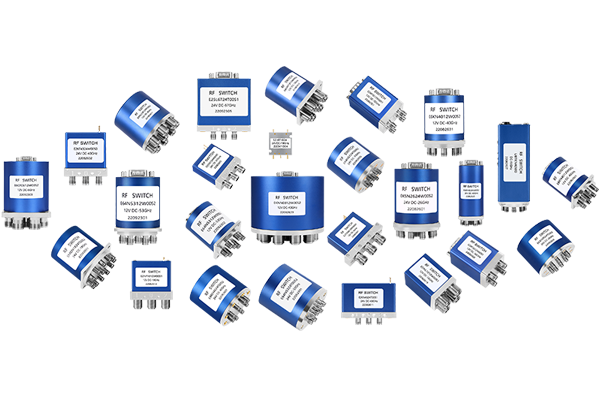
Pin diodes are established as major constituents in high-frequency electronics due to their natural device characteristics Their ability to operate with fast state changes and low capacitance while maintaining minimal insertion loss fits them to switching modulation and attenuation tasks. The main mechanism of PIN diode switching uses bias voltages to regulate copyright flow through the device. Voltage bias impacts the depletion layer width across the junction and consequently the conduction. Bias adjustment yields effective PIN diode switching suitable for high-frequency use with limited distortion
In systems that require precise timing and control PIN diodes are commonly integrated into sophisticated circuit topologies They may be applied in RF filtering arrangements to selectively pass or reject particular frequency bands. Also their capacity to manage high power signals makes them applicable to amplifiers power dividers and signal generators. The push for compact efficient PIN diodes has led to broader use in wireless communications and radar systems
Study of Coaxial Switch Performance
Creating coaxial switches is a challenging task that demands consideration of a variety of technical parameters Performance depends on which switch style is used the operational frequency and insertion loss performance. Superior coaxial switch design seeks minimal insertion loss alongside strong isolation between ports
To analyze performance one must evaluate metrics such as return loss insertion loss and isolation. These metrics are commonly measured using simulations theoretical models and experimental setups. Rigorous performance analysis is necessary to secure dependable coaxial switch operation
- Simulation tools analytical methods and experimental techniques are frequently used to study coaxial switch behavior
- Temperature, mismatched impedances and manufacturing variances often have strong effects on switch performance
- Innovative trends and recent advances in switch design emphasize metric improvements while lowering size and consumption
LNA Design for Maximum Fidelity
Optimizing the LNA’s gain efficiency and operational performance is central to maintaining signal integrity The process needs precise choice of transistors bias points and topology design. A strong LNA design reduces noise contribution and boosts signal amplification with minimal distortion. Modeling and simulation tools enable assessment of how transistor choices and biasing alter noise performance. The objective is achieving a low Noise Figure which measures the amplifier’s ability to preserve signal strength while suppressing internal noise
- Choosing transistors with inherently low noise characteristics is critically important
- Adopting proper optimal biasing is essential to reduce noise creation in devices
- The configuration and topology substantially shape the amplifier’s noise response
Methods including impedance matching cancellation schemes and feedback control boost LNA performance
RF Routing Strategies with PIN Diode Switches

PIN diode based routing offers versatile efficient control of RF signal paths These semiconductors can be rapidly switched on or off allowing dynamic path control. Low insertion loss combined with excellent isolation is a primary advantage that reduces signal degradation. Typical applications include antenna switching duplexing and RF phased arrays
Operation relies on changing the device resistance via applied control voltage to switch paths. The deactivated or off state forces a high resistance barrier that blocks RF signals. A positive bias drives the diode into lower resistance so RF energy can pass through
- Furthermore PIN diode switches boast speedy switching low power consumption and small size
Different design configurations and network architectures of PIN diode switches provide flexible routing functions. Strategic interconnection of many switches yields configurable switching matrices for versatile path routing
Coaxial Microwave Switch Performance Evaluation

Testing and assessment of coaxial microwave switches are crucial to ensure efficient operation within systems. A range of factors like insertion reflection transmission loss isolation switching rate and bandwidth affect switch performance. An exhaustive evaluation procedure measures these parameters across varied operating environmental and test conditions
- Additionally the evaluation should incorporate reliability robustness durability and capacity to handle severe environmental conditions
- Ultimately findings from a thorough evaluation yield critical valuable essential insights and data for selecting designing and optimizing switches for targeted uses
Thorough Review of Noise Reduction Methods for LNAs
Low noise amplifier designs are vital to RF wireless systems for amplifying weak signals and controlling noise. The review provides a comprehensive examination analysis and overview of noise reduction techniques for LNAs. We examine investigate and discuss the fundamental noise sources including thermal shot and flicker noise. We further analyze noise matching feedback topologies and bias optimization strategies to suppress noise. It highlights recent progress including advanced semiconductor materials and novel circuit topologies that cut noise figure. Providing comprehensive insight into noise management principles and approaches the article benefits researchers and engineers in RF system development
Applications of Pin Diodes in High Speed Switching Systems

They possess unique remarkable and exceptional qualities beneficial for high speed switching Their low capacitance and resistance aid rapid switching speeds to meet demands requiring precise timing control. Further PIN diodes’ proportional response to voltage facilitates exact amplitude modulation and switching control. This flexible adaptable versatile behavior makes PIN diodes suitable applicable and appropriate for varied high speed roles They find use in optical communications microwave circuitries and signal processing devices and equipment
Coaxial Switch Integration and IC Switching Technology
Integrated coaxial switch IC designs improve signal routing processing and handling across electronic systems circuits and devices. These integrated circuits are tailored to control manage and route signals via coaxial connections with high frequency performance and low insertion latency. IC miniaturization enables compact efficient reliable and robust designs ideal for dense interfacing integration and connectivity needs
- Through careful meticulous and rigorous application of such methods engineers can design LNAs with top tier noise performance enabling dependable sensitive systems With careful meticulous and rigorous deployment of these approaches developers can accomplish LNAs with outstanding noise performance enabling trustworthy sensitive electronics With careful meticulous and rigorous deployment of these approaches developers can accomplish LNAs with outstanding noise performance enabling trustworthy sensitive electronics With careful meticulous and rigorous execution of these strategies designers can obtain LNAs exhibiting excellent noise performance for sensitive reliable systems
- Application fields encompass telecommunications data communications and wireless networking
- Aerospace defense and industrial automation are key domains for integrated coaxial switch technology
- Consumer electronics audio video equipment and test measurement instruments utilize IC coaxial switching
mmWave LNA Design Considerations and Tradeoffs

mmWave LNA challenges include significant signal attenuation and greater sensitivity to noise sources. Parasitic capacitances and inductances become major factors at mmWave demanding careful layout and parts selection. Keeping input mismatch low and power gain high is critical essential and important in mmWave LNA designs. Device selection including HEMTs GaAs MESFETs and InP HBTs plays a decisive role in attaining low noise figures at mmWave. Further the design implementation and optimization of matching networks remains vital to achieve efficient power transfer and proper impedance matching. Paying attention to package parasitics is necessary since they can degrade LNA performance at mmWave. Implementing low-loss transmission lines along with proper ground plane design is essential necessary and important for reducing reflection and ensuring bandwidth
low-noise amplifierPIN Diode RF Characterization and Modeling Techniques
PIN diodes function as crucial components elements and parts across various RF switching applications. Precise accurate and comprehensive characterization of these devices is essential to support design development and optimization of reliable high performance circuits. It consists of analyzing evaluating and examining electrical voltage current characteristics including resistance impedance and conductance. Their frequency response bandwidth tuning capabilities and switching speed latency or response time are likewise measured
Moreover additionally furthermore creating accurate models simulations and representations for PIN diodes is crucial essential and vital to forecast behavior in RF systems. Several diverse modeling approaches exist such as lumped element distributed element and SPICE models. Choosing the right model simulation or representation depends on specific detailed particular application requirements and desired required expected accuracy
Cutting Edge Methods for Low Noise Amplifier Design
LNA design is a critical undertaking that demands precise attention to topology and parts selection to achieve low noise. Recent semiconductor innovations and emerging technologies facilitate innovative groundbreaking sophisticated design methods that reduce noise significantly.
These techniques often involve employing utilizing and implementing wideband matching networks adopting low-noise high intrinsic gain transistors and optimizing biasing schemes strategies or approaches. Further advanced packaging approaches together with thermal management methods play a vital role in minimizing external noise contributions. With careful meticulous and rigorous deployment of these approaches developers can accomplish LNAs with outstanding noise performance enabling trustworthy sensitive electronics
